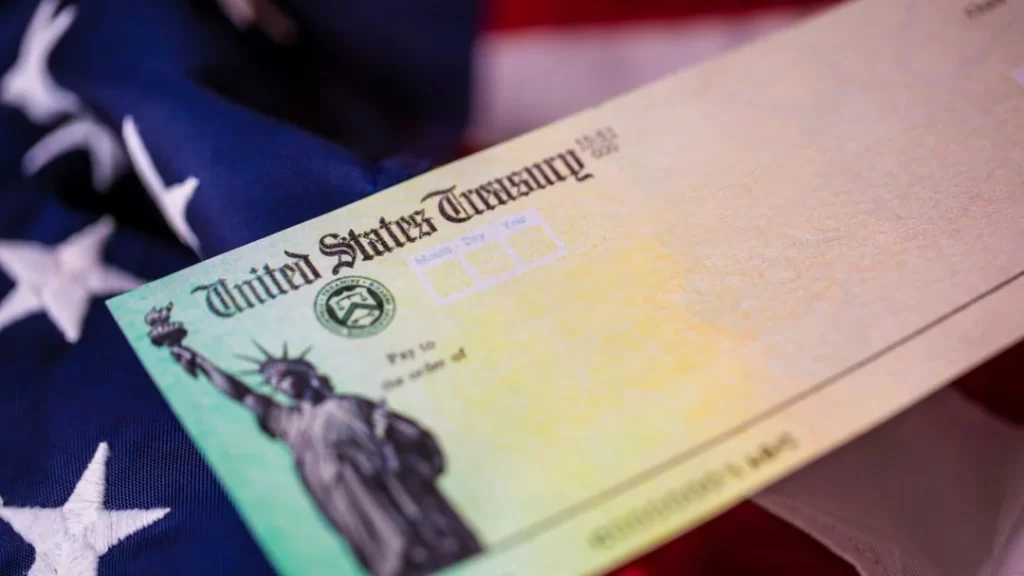The US Senate approved a package of proposals on Tuesday that would send military help to Ukraine, Israel, and Taiwan, collect Russia’s frozen assets and transfer them to Kiev, and impose new sanctions on China.
When Moscow invaded Ukraine, the United States and its allies swiftly froze $300 billion in Russian foreign interests. As the battle continues, that money, the majority of which is in European Union countries, remains untapped. However, around $5 billion of it is located in the United States.
Moscow cannot access the frozen assets, but they remain Russian property. While governments can often freeze property without issue, converting that property into forfeited assets that can be auctioned for the benefit of Ukraine necessitates an additional layer of judicial procedure, including a legal foundation and court judgment.
For more than a year, officials from many nations have discussed the legality of seizing the money from 카지노총판 and transferring it to Ukraine.
The new US law compels the president and Treasury Department to begin finding Russian assets in the US within 90 days and report back to Congress within 180 days.
A month after that, the president will be able to “seize, confiscate, transfer, or vest” any Russian state sovereign assets, including any stake, in US jurisdictions.

US to Consult G7 Nations
Biden is granted discretion over how the money is used for the benefit of Ukraine, but he must consult with other G7 members before acting.
According to the legislation, “any effort by the United States to confiscate and repurpose Russian sovereign assets” must be carried out in collaboration with international allies such as the G7, the 27-member European Union, and other nations.
Policymakers, including Treasury Secretary Janet Yellen, have stated that the United States is unlikely to move without the support of its G7 allies.
Following the bill’s passing, Yellen stated, “Congress took an important step in that effort with the passage of the REPO Act, and I will continue intensive discussions with our G7 partners in the weeks ahead on a collective path forward,”
The European Union has already started to set away windfall income from frozen Russian central bank assets. The bloc calculates that the interest on the money may generate almost 3 billion euros ($3.3 billion) every year.
“The Russians won’t be happy. “The amount of money, 3 billion per year, is not extraordinary, but it is not insignificant,” EU foreign policy chief Josep Borrell told reporters in March.

Concern Over Stealing Russia’s assets
However, some European leaders have expressed reservations about proceeding with a proposal to formally take Russia’s assets in Europe.
At a Council on Foreign Relations event earlier this month, European Central Bank President Christine Lagarde stated that freezing Russian assets “is something that needs to be looked at very carefully” and may “start breaking the international legal order.”
Critics of the REPO Act argue that weaponizing global finance against Russia risks undermining the US dollar’s position as the world’s dominant currency.
To seize Russia’s assets may cause nations like as China, the largest holder of US Treasuries, to conclude that it is not safe to preserve their reserves in US dollars.
The conservative Heritage Foundation has condemned Russia’s asset seizure for damaging the dollar-denominated global finance system, claiming that “it would expose an already fragile economy to unintended consequences and risks for which the United States is unprepared.”
Russian authorities have expressed concern that the new law may destabilize the global banking system.

China Dumping US Treasury Bonds for Gold
Meanwhile, as the Chinese collect more gold, they are selling off US Treasury bonds. This raises a crucial question: who will continue to fund the Biden administration’s enormous borrowing spree?
According to the most recent Federal Reserve figures, China sold an additional $22.7 billion in US Treasuries during February. That reduced its total holdings to $775 billion. China remains the second-largest foreign holder of US debt, but if current trends continue, the United Kingdom could soon overtake China and move into second place.
Japan is the largest foreign creditor to the United States, holding $1.17 trillion in Treasuries. The United Kingdom ranks third, with $700.8 billion in US Treasuries.
China has been divesting from US debt for several years. The country’s Treasury holdings have dropped to their current level, from over $1.1 trillion in 2021. Chinese investment in US debt fell to a 14-year low in October.
Finance professor Zhao Xijun of China’s Renmin University told the South China Morning Post that the selloff of US Treasury bonds would continue. China is deliberately reducing its exposure to the currency. Chinese leaders have witnessed how the United States utilizes the dollar as a foreign policy tool.
The professor stated that the Chinese are not unintelligent. Beijing understands that the US might apply the same pressure on them in terms of US assets.

China Building Up Gold Reserves
So, what should you do if you recognize that something leaves you vulnerable? You reduce the vulnerability. In other words, if you are concerned that the US would take the “dollar rug” out from under you, why not exit the dollar system first? This appears to be Beijing’s strategy, he explained.
China is accumulating gold, a reserve asset with no counter risk. The People’s Bank of China has added gold to its holdings for 16 consecutive months, totaling more than 300 tons since it commenced reporting gold acquisitions in October 2022.
And China’s gold reserves may be substantially more than its public reports. Many observers believe China stores several thousand tons of gold “off the books” in a separate agency known as the State Administration for Foreign Exchange (SAFE).
China’s Treasury dump highlights a major dilemma for the US Treasury.
Professor Zhao claims that the Biden administration is running large deficits month after month. If China and other countries reject US debt, who will support this borrowing spree?
Foreign investors account for roughly one-third of the market for US Treasuries. One may argue that there is still a lot of capacity in the domestic market. The difficulty is that the largest domestic bondholder in the United States has also left the market.

Central Bank Creating Artificial Demand
In reality, no institution owns more US bonds than the US Fed. As of the end of 2022, the Fed possessed 35% of all domestically held Treasuries. Fed Treasury holdings reached more than $6 trillion.
In general, the Fed maintains a strong grip on the bond market. By purchasing and holding US bonds, the central bank creates artificial demand, driving prices higher than they would otherwise be and maintaining yields low.
This enables the US government to borrow more at lower interest rates than it could otherwise.
The difficulty is that the Fed is currently out of the market. The central bank is allowing Treasuries to roll off its balance sheet as part of a quantitative tightening program aimed at lowering inflation.
So, if the largest participant in the domestic Treasury market and the second-largest player in the foreign Treasury market are selling bonds, who will absorb them all, along with the additional debt issued by the US Treasury each month?
This is one of the reasons why Treasury yields continue to rise, despite expectations of a Federal Reserve rate drop. And that’s a major concern, given that the US government has already spent $522.02 billion on interest payments halfway through fiscal 2024.
That is a 35.9 percent increase from the same period in fiscal 2023. The only group with more spending was Social Security.
It appears that the Fed will have to return to the Treasury market with another round of quantitative easing to monetize some of the federal government’s debt. The difficulty is that this is inflationary.
This means that the US taxpayer will eventually have to pay for it all through an ever-increasing inflation tax.






